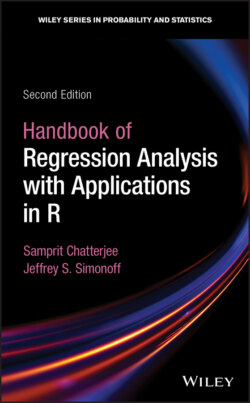Читать книгу Handbook of Regression Analysis With Applications in R - Samprit Chatterjee - Страница 15
1.1 Introduction
ОглавлениеThis is a book about regression modeling, but when we refer to regression models, what do we mean? The regression framework can be characterized in the following way:
1 We have one particular variable that we are interested in understanding or modeling, such as sales of a particular product, sale price of a home, or voting preference of a particular voter. This variable is called the target, response, or dependent variable, and is usually represented by .
2 We have a set of other variables that we think might be useful in predicting or modeling the target variable (the price of the product, the competitor's price, and so on; or the lot size, number of bedrooms, number of bathrooms of the home, and so on; or the gender, age, income, party membership of the voter, and so on). These are called the predicting, or independent variables, and are usually represented by , , etc.
Typically, a regression analysis is used for one (or more) of three purposes:
1 modeling the relationship between and ;
2 prediction of the target variable (forecasting);
3 and testing of hypotheses.
In this chapter, we introduce the basic multiple linear regression model, and discuss how this model can be used for these three purposes. Specifically, we discuss the interpretations of the estimates of different regression parameters, the assumptions underlying the model, measures of the strength of the relationship between the target and predictor variables, the construction of tests of hypotheses and intervals related to regression parameters, and the checking of assumptions using diagnostic plots.
